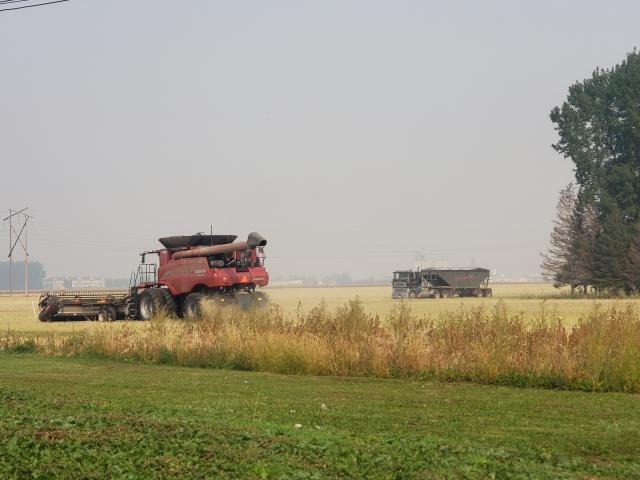A relatively dry week made for a strong harvest progress in the weekly Manitoba crop report.
The highest amount of precipitation fell in the central area with Windygates with 24.2 mm of rain. Several locations saw no rain in the week.
Harvest continues to roll along, with the Fall rye and winter wheat already wrapped up. Field peas are right behind, sitting at 99% complete provincially.

Yield reports are also coming in, with some wide ranges.
In Cereals, we're seeing 40 to 90 bu/acre for winter wheat and fall rye in the north Interlake and Eastern regions, and 80 to 110 bu/acre for fall rye in the south Interlake and Central regions.
As for this year's crops, Spring wheat yield estimates range from 60 to 90 bu/acre, with an average of 70 bu/acre in the Central and Eastern regions. In the north Interlake, yields range from 25 to 55 bu/acre, and up to 70 bu/acre in the south Interlake.
Barley ranges from 90 - 115 bu/acre, oats from 80 - 180 bu/acre, and corn is yet to be harvested.
Corn is approching maturity quickly though, as cobs are in the dent growth stage.
Canola continues to be harvested, but other oilseeds are still developing.
Flax is mostly drying, and at the stems turn brown, pre-harvest applications will go on. flax fields are looking fairly good, aside from the areas that suffered from flooding earlier this year.
Sunflowers are also in the later stages, moving mostly in the R9 stage, but there are still a few locations in stage R8, due to later planting.
With dry bean harvest picking up, there has been a massive varied report of yield, ranging from 500 - 3500lbs/acre. Quality reports are still good overall.
Soybeans will be reaching full maturity soon, but fields range from R7-R8.
As fall approaches, Dairy producers have completed third cut harvest in Eastern Manitoba. Beef cattle producers continue to work on second cut of tame hayfields.
The seasonal risk of frost does increase the possiblity of excess nitrates in feed, and producers are recommended to be mindful of the critical harvest fall period.
Overall forage and pasture growth is more than last year due to the early season moisture. Pastures rarely look this good in September and are still producing regrowth.
Many producers are bailing straw as cereal harvest continues, and some have reported higher production of straw this year.
Aside from some much drier conditions in the southwest portion of the province, dugouts are averaging 65% full.
Closer to home in the northwest region, it was a strong week of harvest, with a small break mid-week for some rain.
The week started hot but also saw some rather chilly nights. The hottest day was seen at the Birch River Station, logging 35c, and the coldest was at the Minitonas Station at 2.7c.
Harvest has been a bit challenging in areas where crops have been lodged, and that's in cereals, oilseeds, and field peas.
Local yeild reports are varied, with spring wheat being a wildcard. The average reported yield so far is approximately 65 to 70 bushels/acre. Some fields average less at 40 to 50 bu/ac and some go 80 bu/acre plus.
Field pea and canola harvest are more stable, with only a 5-10bu/acre range. Canola is a bit lower than expected, as crops have dealt with difficult conditions and disease pressure.
With the season moving a long, it's only a matter of time before the fields mature, and the last of the grain hits the bin.
We here at CKDM wish all producers a safe, speedy, and bountiful harvest.






